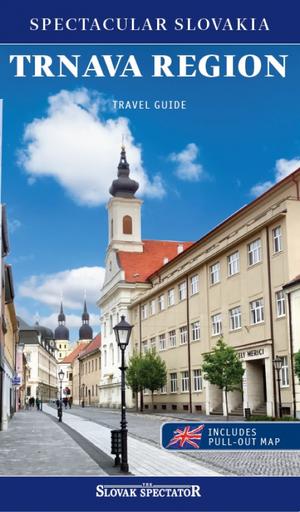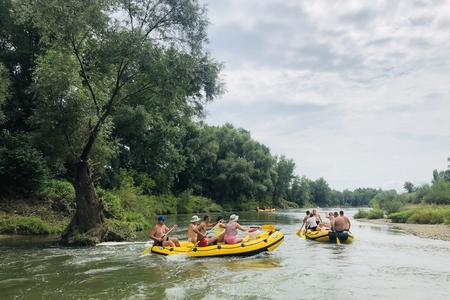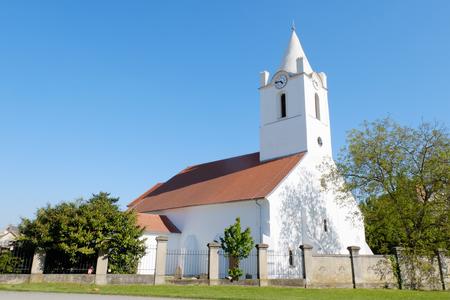The fortification of a church ruin in Prietrž, western Slovakia, demonstrates how turbulent life in Hungary was in the second half of the 17th century.
In a locality known as Vŕšok among locals, people initially built a chapel. Historians believe it stood there already before 1565. A few decades later, Lutherans transformed the sacred construction into a three-nave church with a tower facing west and a sanctuary facing east.
During the long counter-reformation period, Catholics took the church away from Lutherans, at first temporarily. In 1733, the Catholic Church became its permanent owner.
 With this guide you’re sure to find that “Little Rome" is ready to welcome you with open arms (and mead). (source: Spectacular Slovakia)
With this guide you’re sure to find that “Little Rome" is ready to welcome you with open arms (and mead). (source: Spectacular Slovakia)
“A quake in 1906 then damaged the already dilapidating church,” said Matúš Sládok of the Monuments Board’s Trnava office. He added the church was taken down six years after the earthquake.
Slovakia’s Monuments Board declared the ruined church and its surroundings in Prietrž, Trnava Region, a national cultural monument last year.
61 embrasures in the walls
The church’s fortification, dubbed “Husitské Hradby” [Hussite Walls], was built in the last third of the 17the century, long after the end of the 1419-1434 Hussite Wars.
The walls in the shape of a trapezoid were built from stone. Bricks were rarely used. “The fortification is well-preserved. It is damaged only in two places through which you can enter the area,” said Sládok. The original entrance led through a gate that was later bricked-up.
As the expert went on to say, four inwardly open round bastions in the corners of the defensive fortification are the most striking element of the old complex. Each of them has four embrasures, small openings in the walls. Sixty-one embrasures have been preserved.

“The complex’s architecture is an example of the military then, and how even a small fortification helped people defend against small military units and bandits,” Sládok explained.
Jewish tombstones
In the area, a cemetery dating back to the period when the church was owned by Lutherans, and later used by Catholics, can still be found. Eleven tombstones have been preserved, the oldest ones of which come from the second half of the 19th century.
“Outside the fortification, there is another old cemetery – a Jewish one – with only two preserved tombstones,” the expert concluded.

A path starting in the village leads to the cultural monument.
Spectacular Slovakia travel guides
A helping hand in the heart of Europe thanks to the Slovakia travel guide with more than 1,000 photos and hundreds of tourist spots.
Detailed travel guide to the Tatras introduces you to the whole region around the Tatra mountains, including attractions on the Polish side.
Lost in Bratislava? Impossible with our City Guide!
See some selected travel articles, podcasts, traveller's needs as well as other guides dedicated to Nitra, Trenčín Region, Trnava Region and Žilina Region.



 The fortification walls of a declined church in Prietrž, Trnava Region. (source: Facebook/Pamiatky SR)
The fortification walls of a declined church in Prietrž, Trnava Region. (source: Facebook/Pamiatky SR)